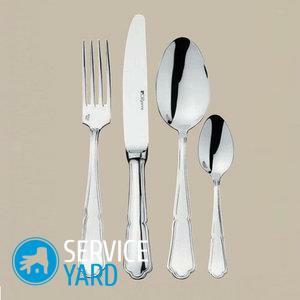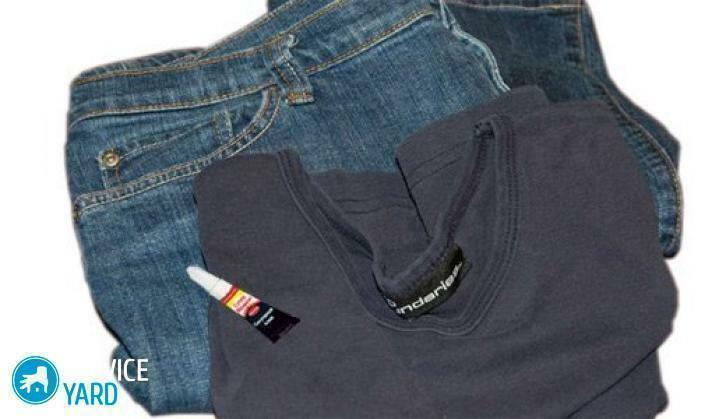
- Some simple rules
- Basic table layout
- Informal table layout
- Formal table layout
- Materials
At least once in our life each of us came across such a thing as the design of the table, whether it be cooking for a home meal or going to a restaurant,where on the tables the dishes are supplemented by several instruments. In fact, there are not so many rules that you should know for proper servings. Before you understand how to correctly lay out cutlery, you need to consider the dishes that will be served on the table. As a rule, plates are placed on the table, cups, glasses, glasses, spoons, forks and knives. You should start with plates, which then you will cover with other objects. But we will deal with everything in order.
to content ↑A few simple rules for
All that is needed first is to be placed closest to take. And even if a menu of ten dishes is planned, this does not mean that the guest should have a whole mountain of dishes and all kinds of appliances:
- Instruments and utensils are always placed in order of serving dishes, according to what you are going to use first.
- Table objects are placed so as not to get confused in their use: the fork and knife are laid with the main dish, and the spoon for dessert is on the right behind the plate.
- Always look the blade of the knife in the direction of the dishes.
- A glass of water is above the knife.
- Forks are located on the left side.
- The spoons are always to the right of the knives.
- When feeding wine behind the knife on the right, there should be a corresponding glass. In the case of filing a few different drinks, the other glasses are placed there.
- Along with Italian dishes, bread utensils are always served.
- Spaghetti is eaten with a fork and spoon, and the butter knife is placed in a plate for bread.
- If there is soup in the menu, then a spoon for it is put between the snack bar and the fish knife.
- If there is no fish dish on the menu, you can put a spoon in place of a fish knife.
- In order to make it convenient to use any object, the ends of the handles together with the dishes should be placed two centimeters from the end of the table.
Basic table setting
Many people use basic design to correctly lay out cutlery on the table during a home dinner or dinner, when there is no need for a large number of different serving items.
Basic serving includes:
- Plate.
- Knife.
- Plug.
- Spoon.
- Napkin.
- Glass for water.
Informal table layout
If you plan to organize a friendly brunch or just an informal meeting of friends and family, you can decorate the table in an informal manner.
In this case, the serving can look like this:
- The napkin is located in the place where the plate with the main dish will be placed next.
- Dining and snack fork is located to the left of the dish in the order in which it is planned to serve meals.
- A dessert, a tablespoon and a knife are placed to the right of the plate, in the following order: a knife, a dessert spoon and, finally, a tablespoon.
- Dishes for snacks are placed to the left of the forks.
- A crockery plate and oil knife are located above the forks.
- A wine glass, a glass of water and a cup for coffee or tea are placed above the instruments on the right.
Formal serving of the table
This design of the table is more suitable for a holiday or for some serious events. Let's imagine that you plan to serve the main dish, fish, soup and oysters.
Important! Do not forget that all dishes and appliances are in the order in which the dishes will be served.
Your serving will look like this:
- A snack fork, a fork for fish and a dining fork fall exactly in this order to the left of the dish.
- Soup plate is placed on a plate in which you will serve a second course.
- The oyster plug is to the right of the plate from the very edge( only this fork is put on the right).
- Further as you approach the dishes: a tablespoon, a knife for fish, a table knife.
- Dishes for pies and butter knife are placed on the left above the forks.
- Glasses of red and white wine, a glass for water set above the instruments on the right.
Important! After the dinner or dinner is over, a table for dessert, tea or coffee is served at an appropriate level.
to content ↑Materials of
In addition to the basic rules on how to correctly lay out cutlery, you should also know about the materials from which they are made. Let's consider them in detail:
- Wooden - used for trips to nature, but not for everyday use. Wooden products absorb moisture, short-lived, and use them is not very convenient.
- Aluminum - were common before. Today there is debate about the dangers of aluminum, but anyway, such items lose their color, shape, and are fragile too quickly.
- Stainless steel - are among the most popular. They are made of medical stainless steel, which does not react chemically with acids, salts and alkalis.
Important! Usually, stainless steel "18/10" is used, containing 18% chromium and 10% nickel.
- Melchior - this material is an alloy of nickel, copper and manganese. Such items ceased to produce in the 50's. Today, similar products are manufactured from nickel silver( it is softer and contains zinc) - they are coated with gold, silver or blackened.
Important! As a rule, on the reverse side of such products there is an MSC marking.
- Silver - very expensive, are a matter of pride. The devices themselves are quite heavy, so you can not say that it is very convenient to use them every day.
Important! At the end of the serving there is a arrangement of flower vases, sets with different spices and other decor elements. Pepper and salt should be placed in the middle of the table - they should be placed on special stands. Also allowed to put bottles with sauces, vinegar and vegetable oil.
Now you are ready not only to conveniently and nicely decorate a festive table, but also to surprise your loved ones with pleasant servings in ordinary everyday dinners.



